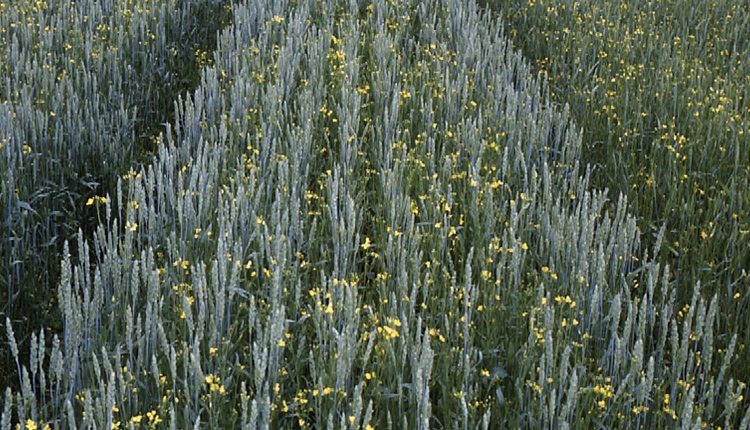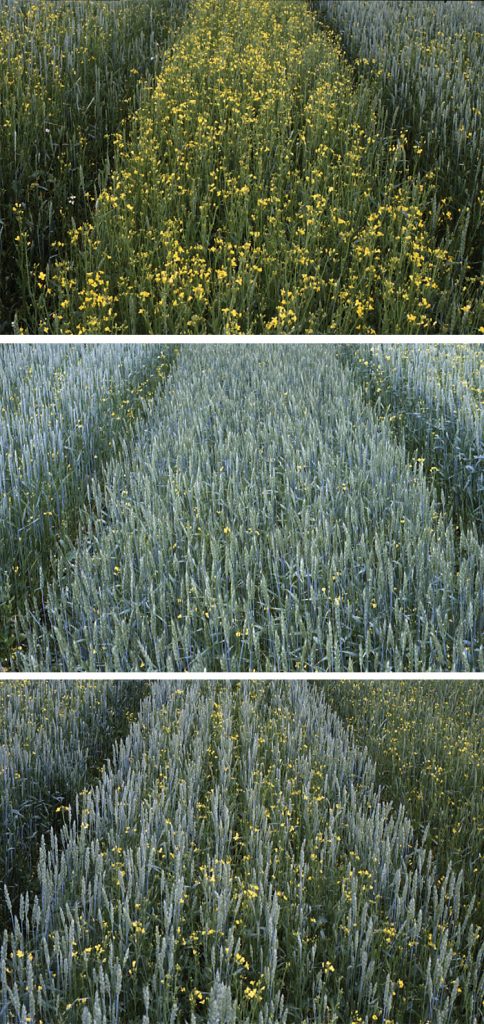A recent eight-year study shows 25 to 30 percent less weed mass every year when crops are planted in grid patterns. The effects are even stronger at when also planted at high densities.
Often, competition among plants is seen as a problem in farming, but in Jacob Weiner’s eyes, plant competition can be a good thing, especially when it comes to suppressing weeds biologically.
Weiner, a plant ecologist from the University of Copenhagen, says that most weed researchers try to reduce competition between crops and weeds, but his approach is just the opposite. In recent research, Weiner and his colleagues examined what would happen if wheat were planted in a tight grid pattern rather than in rows with large gaps between them.
“I want competition between crops and weeds to start as early as possible,” he says, explaining that when crops are grown in rows, the plants are placed so close together they immediately begin to interact with one another, and any crop-to-weed interactions that could be beneficial don’t occur until later.
However, when crop plants were distributed in a uniform grid, he says they interacted with weeds sooner than interacting with each other. This faster interaction between crops and weeds takes advantage of size-asymmetric competition — the phenomenon that bigger plants can often suppress smaller plants.
Early in the growing season, these bigger plants (the crops) have a disproportionate advantage over the weeds, which have small seeds that can travel far and grow quickly. Weiner says this advantage is primarily due to the rivalry for sunlight. When crops are densely planted in a grid, the leaves capture and block the light that the weeds would otherwise use. But when crops are planted in rows, the weeds receive more sunlight.
During the eight years Weiner and his colleagues studied this approach, they observed positive results. Weiner says that with the grid-pattern planting, they measured 25 to 30 percent less weed mass every year, and they saw even stronger results when the crop was planted at a higher density.
Weiner says while this planting technique yields great results in fields with high weed pressure, their research found little-to-no benefit in fields where weeds were not an issue.
Weed management, especially that of resistant weeds, is a major issue of concern for U.S. farmers. Despite large expenditures for weed control, it’s estimated that losses due to weeds left uncontrolled exceed $8 billion annually, according to the 2015 Ohio, Indiana and Illinois Weed Control Guide.
Moving Forward
In order for farmers to be able to plant in a grid pattern, Weiner says two things must first be done, the development of new planting equipment with a grid-planting design and the breeding of plants designed to work best in this type of environment.
While Weiner says seed varieties on the market today can be used, it would be advantageous to develop varieties that can compound this particular interaction between crops and weeds.
“When plant breeders select plants for production, they do so under the standard conditions,” Weiner says. “If you change those conditions, you might need new varieties. If we really wanted to stop using herbicides completely, we need to make this system work even better.
“Developing varieties for this system — a focus on plant-plant interactions and weed suppression with a more uniform sowing pattern — would be the next step. It’s a very different environment for the plant. When you change the density and the spatial pattern, that’s a very different world from the individual plant’s point of view.”
On the flip side, limitations of a grid-based planting pattern were discovered in dry springs. Weiner shares that in general, weeds tend to be worse in dry environments, so the pattern might not see the same advantages in drylands without irrigation as environments with plenty of moisture.
Another limitation of planting at higher densities is that it can cost more because of the need to buy more seed.
However, an advantage of using a grid pattern with high density plant populations is that more soil is covered in what Weiner calls a “high biomass cropping system.”
“Weeds, if they’re not hurting the crop, have positive effects; they attract insects and natural enemies, or pests, and they increase biodiversity and soil organic matter input,” Weiner says. “If we can maintain or even increase current yields with the ground covered, then in 10 years we’ll be much better off. We will have put a lot of organic matter that we’re now losing back into the soil.”
Weiner points out that in the quest to farm and produce more food, feed, fiber and fuel from less in a sustainable way, this system has a great deal of potential. He says the adoption of this planting practice will help to reduce herbicide use and herbicide resistance among weeds, which is a concern.











